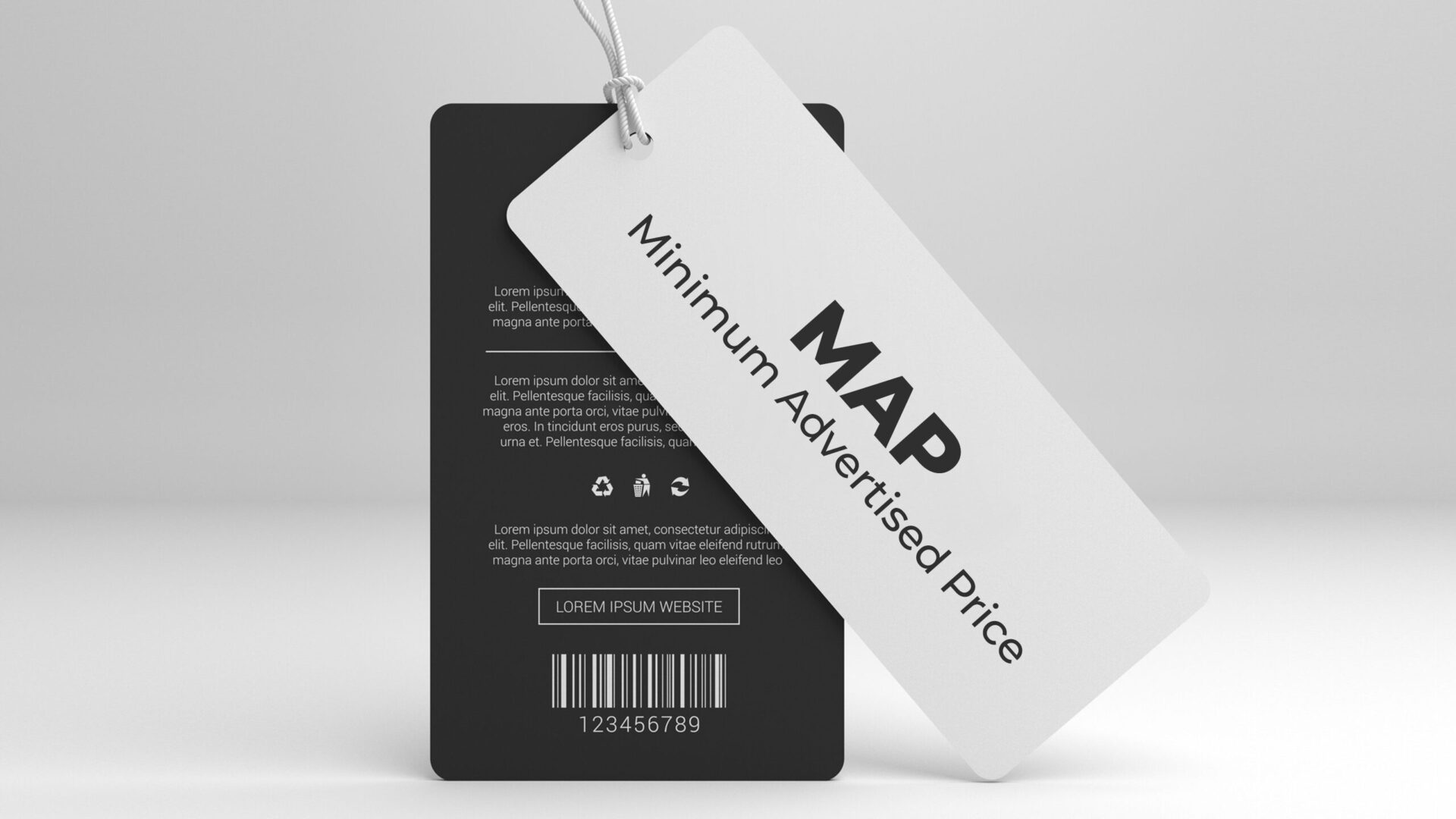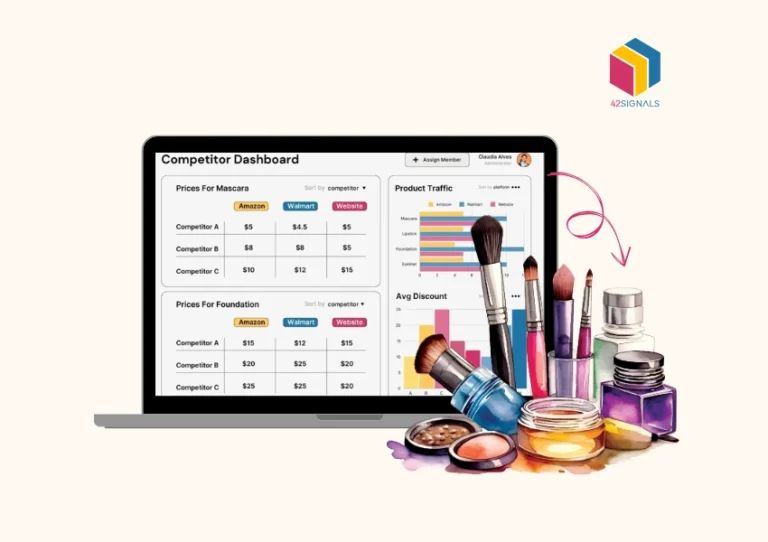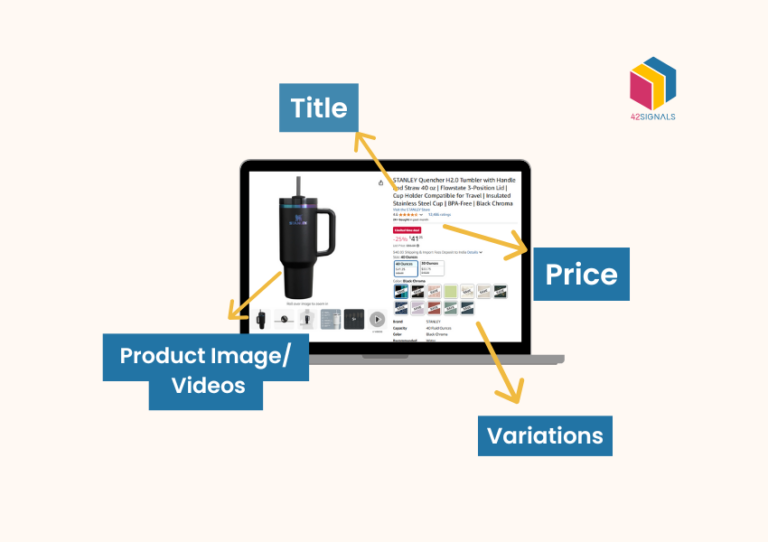MAP violations occur when retailers sell products below the Minimum Advertised Price set by manufacturers. This usually leads to a price war, hurting both brand reputation and retailer margins. That’s where MAP monitoring services come into play and make it easier for businesses.
When retailers ignore MAP guidelines, manufacturers may penalize them, ranging from warnings to account suspension. Monitoring MAP violations is crucial to preserving the value of a brand and ensuring a level playing field in the market. It helps to uphold the integrity of pricing across various channels, protecting profits and the brand’s image.
The Importance of Monitoring MAP Violations with MAP Monitoring Services

Image Source: Priceeva
Vigilantly supervising adherence to the established Minimum Advertised Price (MAP) policy proves instrumental in safeguarding your brand equity. Instances, wherein retailers promote your merchandise beneath the stipulated MAP, erode brand prestige, sparking price competition detrimental to your earnings. Upholding fair trade among certified vendors relies on diligent surveillance of MAP compliance, thereby protecting both brand image and customer confidence.
Additionally, by monitoring MAP violations, you help protect relationships with loyal retailers who stick to the rules. It’s about keeping fair competition alive and your product’s worth intact. So, taking MAP violations seriously is not just about maintaining prices; it’s about upholding the strength and integrity of your brand in the market.
Tools and Software for MAP Monitoring

Let’s cut to the chase; you need a solid set of tools to monitor MAP violations effectively. The good news is, that there’s a spread of specialized software out there, designed to make this task a breeze. These platforms scour the web, keeping an eagle eye on advertised prices, and flag up anything that dips below your MAP policy line. Most MAP violation monitoring tools hand you features like real-time alerts, detailed reports, and analytics dashboards that make deep dives into the data less of a headache.
5 Steps to Using MAP Monitoring Services

Setting Up Your Monitoring System with 42Signals
To begin with, you can schedule a free demo with our experts. Once you share your requirements and are on board, brace yourself for the smart part – setting up alerts. With 42Signals, you can customize these so you’ll know instantly when a retailer drops their price too low. And here’s the kicker: this system watches over prices around the clock, so while you’re kicking back, 42Signals is on the front line, ensuring MAP’s being enforced.
Identifying Potential Violations with MAP Monitoring Services
Spotting a MAP violation is like catching someone speeding on the highway; you need sharp eyes and the right tools. So here’s how you find those rule-breakers:
- Keep your eyes on the ads. Whether it’s online, in print, or somewhere else, you’ve got to watch the advertised prices like a hawk. If a price seems too low, it might just be breaking MAP.
- Use price tracking software. This does the heavy lifting for you. It’s like having a bunch of watchdogs that never sleep, always scanning the internet for prices that dip too low.
- Regularly check up on your retailers. You’ve got a list of approved sellers, right? Make it a habit to check in on them. Some might slip up or decide to take a gamble on a price cut.
- Stay updated on MAP policies. MAP isn’t static. It changes, and you’ve got to stay on your toes and keep up with the latest policies—this way, you know exactly when someone’s stepping out of line.
When you spot a violation with your MAP monitoring services, don’t just sit on it. Take notes and get ready to take action.
Analyzing Violation Data for Informed Decisions
When you’ve gathered enough data on MAP violations, it’s time to roll up your sleeves and dive into the analysis. What you’re looking for are patterns. Which products are getting violated most often? Any particular resellers who seem to play by their own rules too regularly? These patterns can hint at where you might need to tighten up your MAP policy or even reconsider your partnerships.
But it’s not just about playing the blame game. This data is gold when it comes to fine-tuning your strategy. Maybe you’ll discover that violations spike during certain sales seasons. That could be a sign to pre-emptively reach out to resellers with a gentle reminder of your policies right before these critical periods.
Use this information to have honest conversations with your resellers. It’s all about working together to maintain a fair market—both for them and for you. Remember, informed decisions are smart decisions, and smart decisions keep your brand’s reputation as shiny as a knight’s armor.
Address and Resolve MAP Violations
When you catch a MAP violation with the help of your MAP monitoring services, act swiftly but calmly. Here’s how you tackle it:
First, document the violation with clear screenshots that show the product, price, and the retailer’s details.
Then, inform the retailer of the violation through an official communication, referencing the specific terms they’ve broken.
Give them a deadline to fix the issue. If they don’t comply, you may need to enforce penalties, which could range from warnings to retailer suspension.
Remember, staying consistent with your actions is key to maintaining a strong MAP policy.
Maintaining Relationships with Retailers Post-Violation
When you catch a retailer breaking your MAP policy through your MAP monitoring services, it might feel like trust is broken, but it’s essential not to burn bridges. Open communication is key. Reach out and discuss the violation directly but diplomatically. Often, violations are not malicious but rather oversights or errors.
Clarify the importance of the MAP policy and its benefits for both parties. It’s not just about control; it’s about maintaining the brand’s value and competitive landscape which ideally benefits everyone involved. Once the issue is resolved, strengthen your relationship through regular check-ins and provide them with clear resources on your MAP guidelines. Remember, aim to be firm on policy but flexible in relationship-building to ensure long-term cooperation and mutual success.
Legal Considerations and MAP Policy Enforcement
When dealing with MAP violations, treading the legal line is critical; you don’t want to end up in hot water. Your MAP policy must be crystal clear and consistently applied. So, make sure your policy outlines what constitutes a violation and the consequences that follow. Remember, any enforcement should be in line with antitrust laws.
This means you can’t bully retailers into following prices, but you can enforce agreements that they willingly agree to. Stay vigilant, document everything, and when necessary, consult your legal team to avoid stepping on any toes.
Key Takeaways
Now that we’ve walked through the ins and outs of Minimum Advertised Price (MAP) monitoring, let’s bullet point the crucial nuggets to take away. First off, understanding the relevance of MAP is vital—it protects your brand and ensures fair competition. Remember, setting up a MAP policy needs to be clear and enforceable; unclear guidelines help no one.
Tracking MAP compliance is another key. Automated MAP monitoring tools like 42Signals can save you time and a heap of trouble by catching violations quickly. We discussed the importance of taking appropriate action against violators, too.
Finally, keep the lines of conversation open between you and your retailers; often, they’re not trying to cross you, and a conversation can settle potential disputes without the fireworks.







